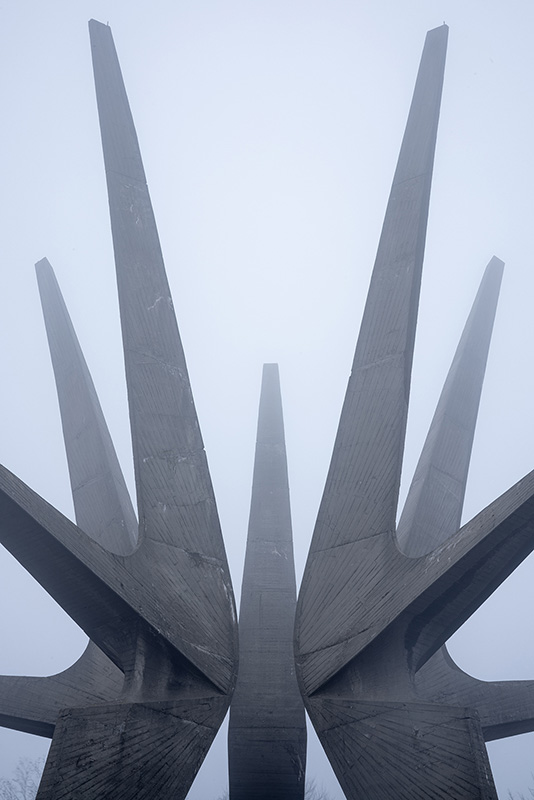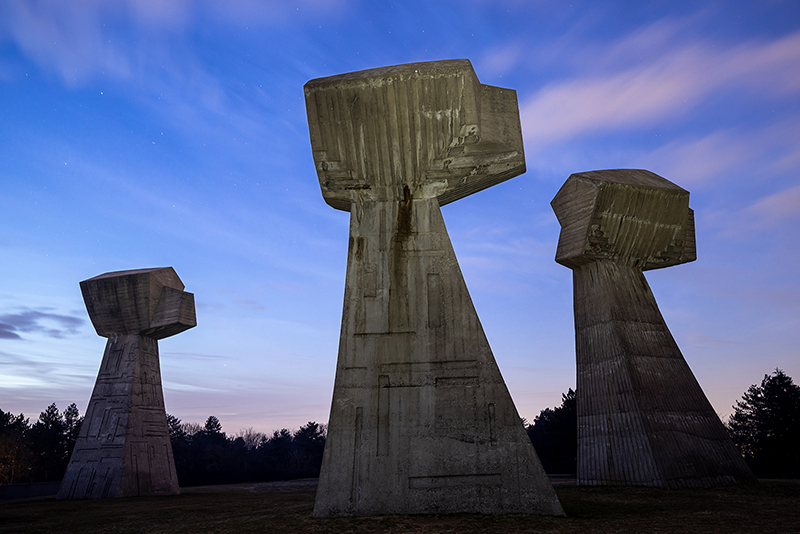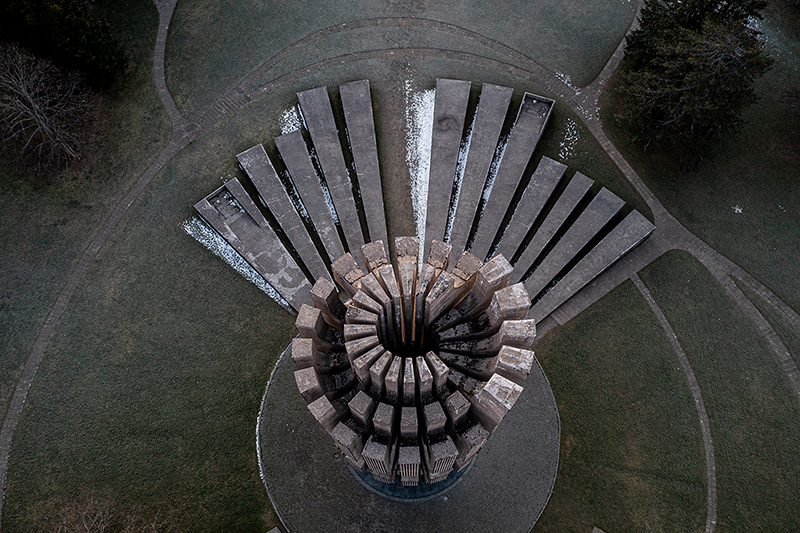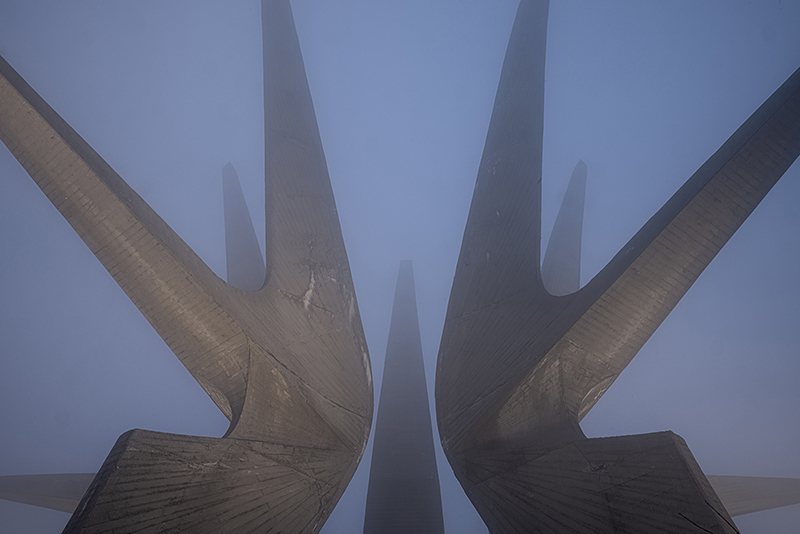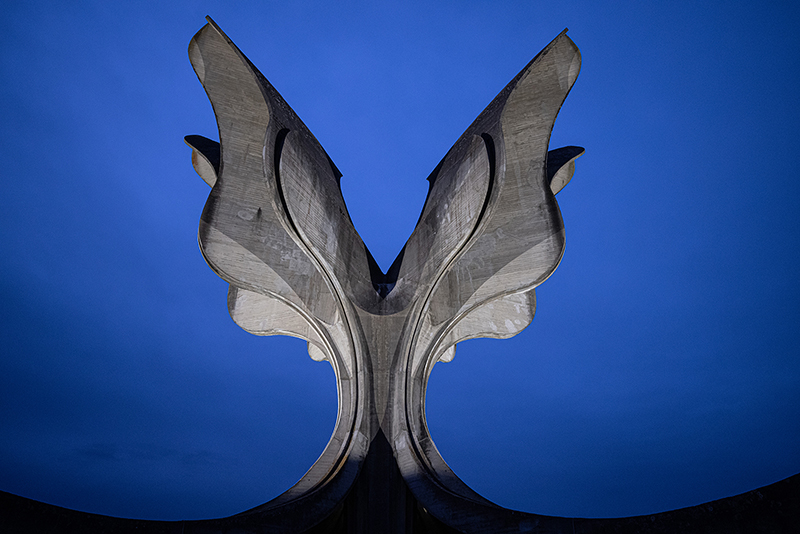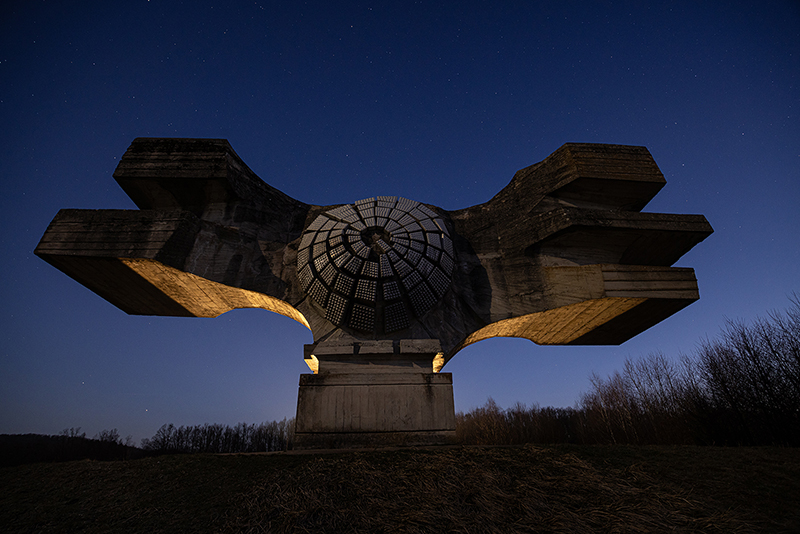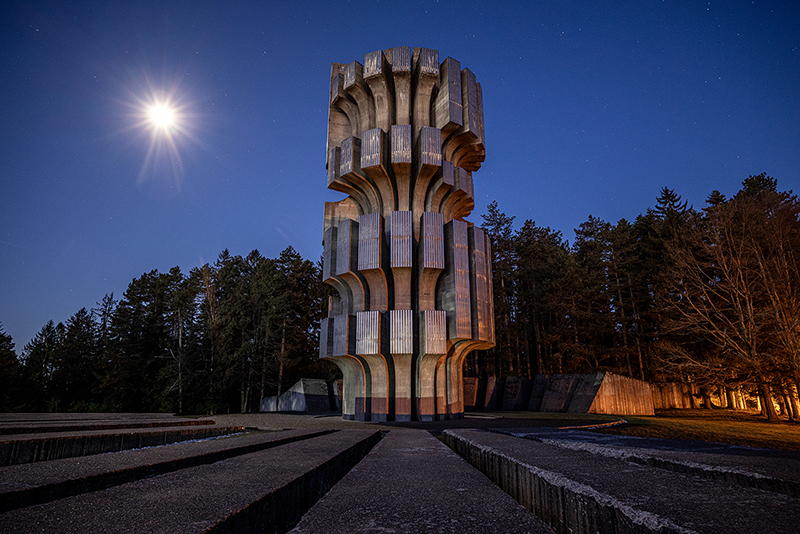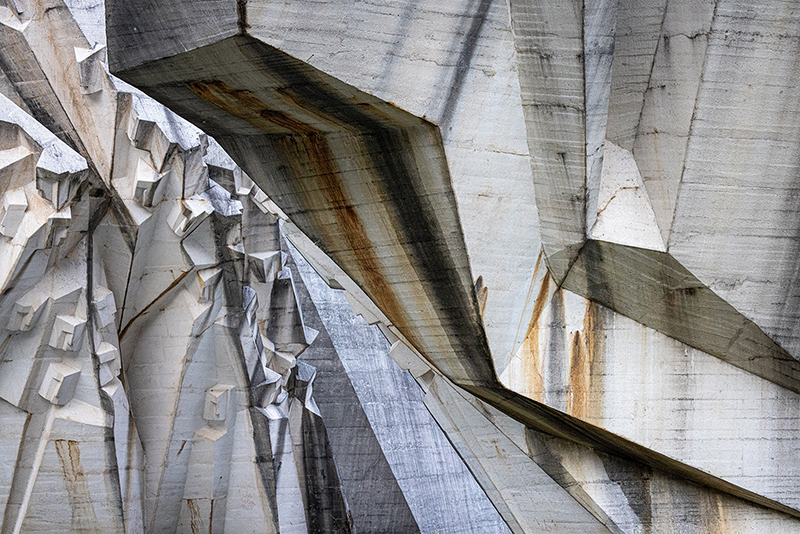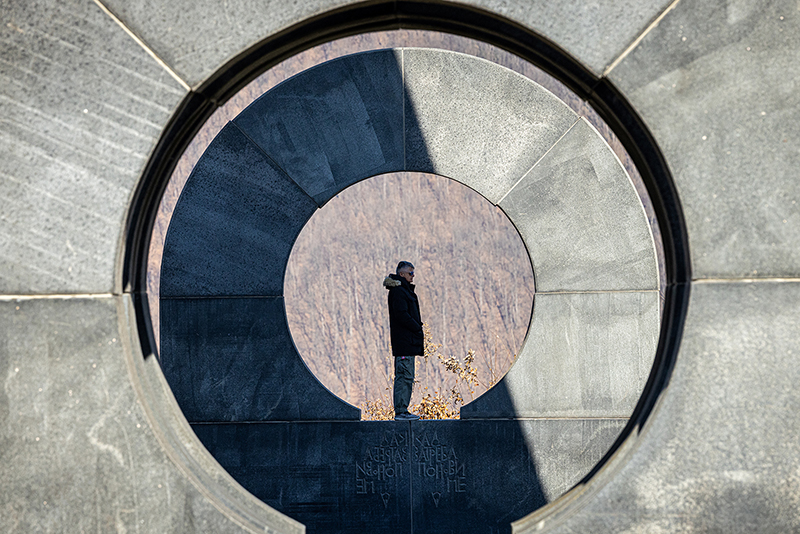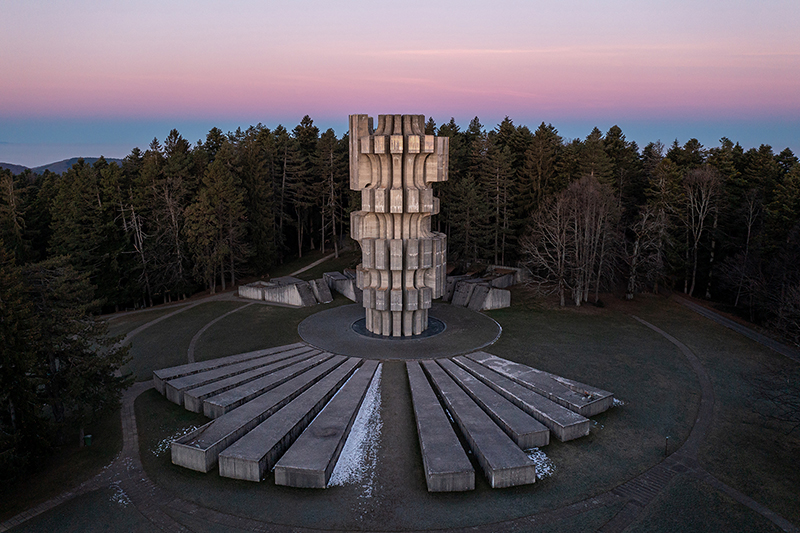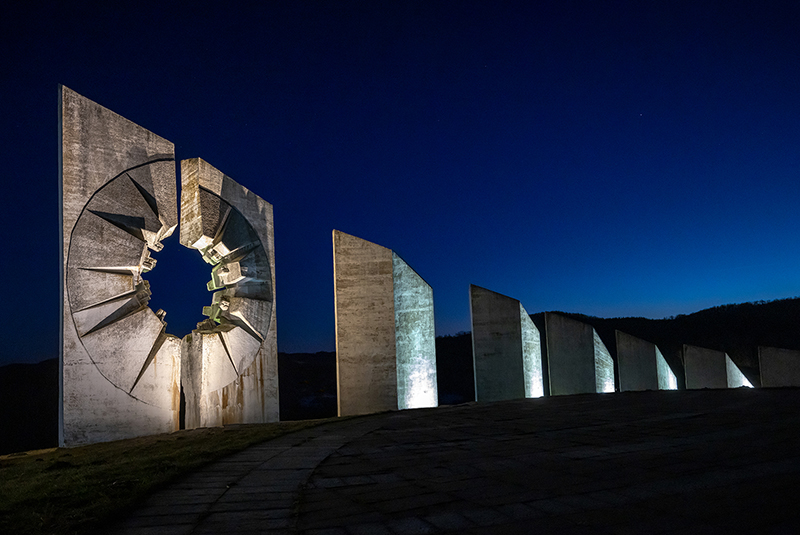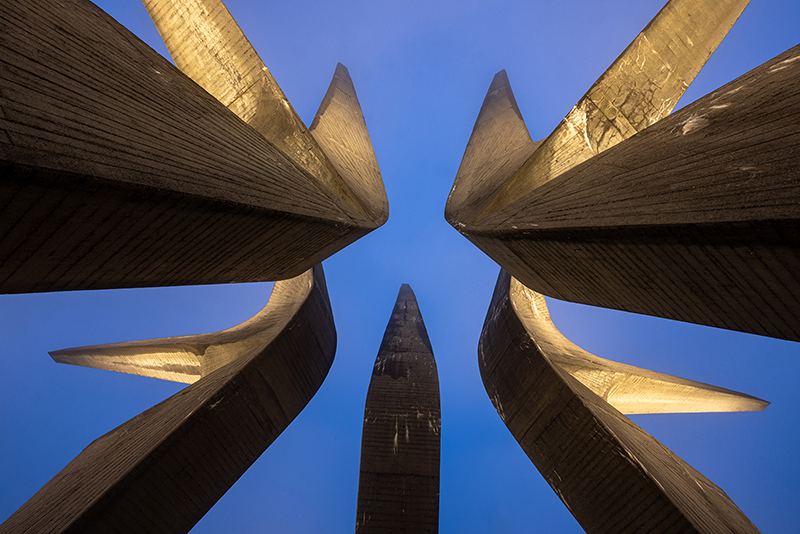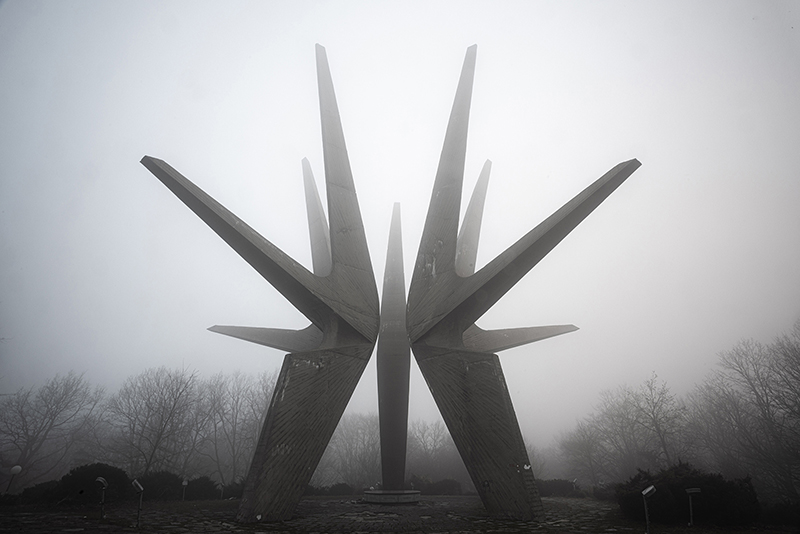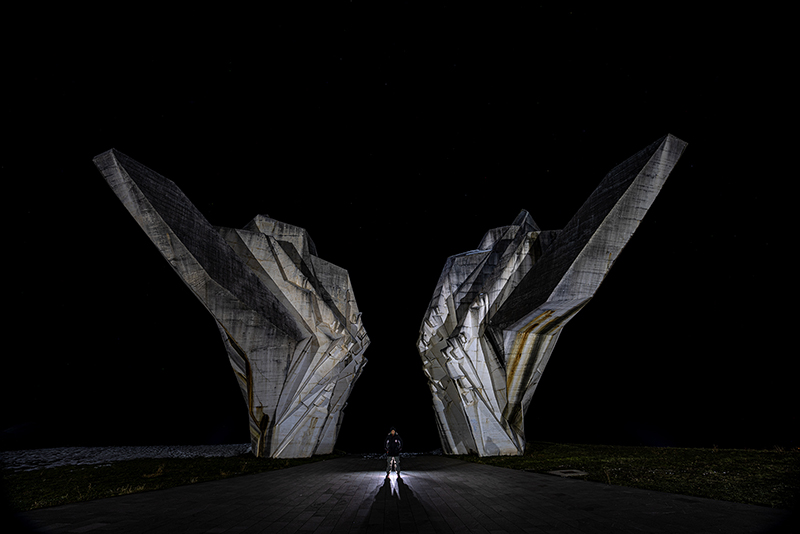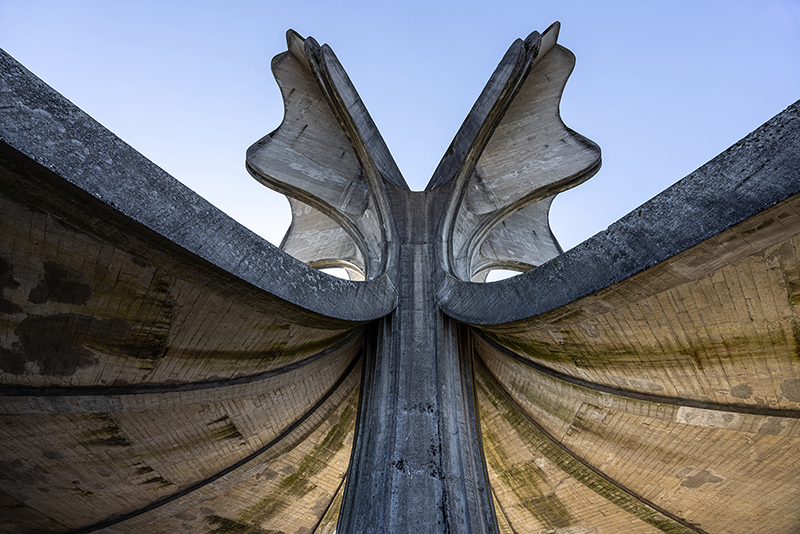Ex-Yugoslavia’s Brutalist Monuments
A Fusion of Architecture and History
Echoes of utopia
Photography Tour of Superlatives with Award-winning Photographers Matjaz Krivic & Luka Vunduk
Step into the shadows of where the silent, stoic structures of a bygone era stand as the final strongholds of a shattered utopian dream. “Echoes of Utopia” is a unique and unforgettable photo tour that seeks to encapsulate the raw essence of the communist-era brutalist monuments scattered across the former Yugoslavia. These colossal concrete leviathans, now weathered and often forgotten, serve as a hauntingly beautiful testament to a regime that sought permanence in impermanence.
Embark on our unforgettable photo tour that aims to capture the dichotomy between the brutalist ideology of strength, functionality, and communal unity, and the present-day reality of decay and obsolescence. These structures will be framed not just as relics, but as storytellers of a time that deeply shaped the Balkan landscape.
Our photo tour will traverse the stark ridges of concrete and steel, exploring how these monuments interact with the land and the skies—giants rooted in the earth, yet untethered from their original purpose. Through the lens of two extraordinary mentors, National Geographic photographer Matjaz Krivic and Canon Ambassador Luka Vunduk (both born in Yugoslavia) we will delve into the heart of brutalism creating friendly and truly unique photo and cultural experience that you will never forget.
And last but most certainly not least: when we travel from one monument to another, there will be the wonderfully stunning Balkans with their cuisine, remote villages, laid-back towns, greenish rivers, Bosnian coffee in a džezva, hospitable people who will very often open their hearts to you.
The period following World War II saw the rise of Yugoslavia as a unique socialist federation under the leadership of Josip Broz Tito. In an effort to forge a distinct national identity while promoting unity among its diverse population, Tito’s government commissioned a series of monumental structures that were designed to evoke a sense of grandeur and progressiveness.
These structures, often situated in remote and challenging landscapes, aimed to reflect the ideals of the emerging nation.
The brutalist movement, which gained prominence in the mid-20th century, aligns remarkably well with the ideological tenets of the Yugoslav government. Its emphasis on functionalism, simplicity, and the use of concrete as the primary building material aligned with the socialist principles of efficiency, equality, and a break from ostentatious excess.
These monuments, many of which were dedicated to commemorating the struggles of World War II and the nation’s subsequent liberation, became physical manifestations of Yugoslavia’s collective memory.
The Spomeniks, a term which translates to “monuments” in English, became the most iconic expression of Yugoslav brutalist architecture. These abstract and avant-garde structures were designed by prominent architects like Vojin Bakić, Dušan Džamonja, and Bogdan Bogdanović. Each Spomenik featured a unique design that aimed to capture the essence of the event it commemorated. The Memorial to the Revolution in Podgarić, Croatia, for instance, takes the form of an abstract representation of Partisan fighters rising from the ground, symbolizing the rebirth of the nation through their sacrifices.
Yet, as the political landscape of Yugoslavia shifted over time, the symbolic power of these monuments evolved as well. The death of Tito in 1980 and the subsequent collapse of Yugoslavia in the 1990s brought about the disintegration of the shared ideology that had once held the nation together. With the rise of nationalism and regionalism, the Spomeniks became contested spaces, symbolizing different narratives and ideologies depending on the viewer’s perspective. In recent years, there has been a renewed interest in the preservation and exploration of these brutalist monuments. Artists, photographers, and historians have recognized their significance as both architectural marvels and repositories of historical memory. Efforts to document and protect these structures have grown, and some have even been designated as cultural heritage sites.In conclusion, the brutalist monuments of ex-Yugoslavia stand as a unique fusion of architecture and history. Emerging from a desire to shape a national identity and promote unity, these structures encapsulate the ideologies and values of a bygone era. As they continue to spark curiosity and reflection, they serve as a tangible reminder of the complex relationship between architecture, politics, and memory.
Itinerary
1: Zagreb Airport – Podgarić – Jasenovac – Kozara
2: Kozara – Bravsko – Smrike – Travnik
3: Travnik – Tjentište – Foča
4: Foča – Kadinjača – Užice
5: Užice – Popina – Bubanj – Kosmaj
6: Kosmaj – Belgrade Airport
Photography experience
We want this tour to be about You & Your photographs. Through Matjaz’s and Luka’s guidance, you’ll learn the secrets of the masters, take your photography skills to the next level and leave (y)our adventure with a collection of magnificent photographs.
PHOTOGRAPHY SKILLS YOU’LL LEARN THROUGHOUT THE TOUR INCLUDE:
- Composition, capturing The moment
- Post-processing tips and tricks
- The art of working with light
- Creatively working with your equipment and filters
- The unique techniques of landscape photography while also touching on aerial, black and white and night photography
Luka & Matjaz will also be there for you to offer one-on-one guidance on specific skills you’d personally like to master. The best way to learn the art of photography is by taking photos. Luka & Matjaz will be by your side sharing insight and guidance as you shoot; helping you create best-possible photos as you shoot. You’ll learn the art with the award-winning masters.
When we stay at our hotels, you’ll have the opportunity to process and enhance your images using the best-available editing software – thus helping you find your unique personal style as an artist. Yes, you should bring your laptop as well.
If you wish to enter competitions, critique sessions are an important part of the learning process. Matjaz & Luka will offer one-on-one sessions during the tour. Having your work criticized can be frustrating at first but this is the most powerful way to improve your photographic skills.
All levels are welcome. The tour is designed to cover all aspects of image capture and post processing. We can help you optimize your equipment as well.
Physical considerations
You should be in good general health, however there won’t be not much walking and/or trekking. Temperatures will range from 0-15 degrees Celsius.
What to bring
• Hat, sun glasses
• Comfortable warm clothing – warm down jacket, wind-stopper
• Comfortable hiking boots.
• Travel and medical insurance, passport, medication
Terms and conditions
WORKSHOP DATES AND PRICES
Tour dates: 27.1.2024 – 1.2.2025 and 20.1.2025 – 25.1.2025
The tour starts in Zagreb Croatia and ends in Belgrade Serbia
Cost: from 3900€/person, all inclusive
Minimum 5, maximum 12 participants
Terms of payment
- A deposit of EUR 1500 must be paid to secure your place. The deposit is non-refundable unless you can sell your place to someone else
- Note: the workshop is quoted in EUR. To calculate the rate in USD, the currency exchange rate will be provided at the time of transferring the deposit and balance
- The online Registration Form must be filled in and signed by each participant at the time of paying the deposit. Participation will be declined otherwise
- The remaining balance must be paid at least 2 months in advance
- Bookings will be accepted in the order they are received
- Important: the workshop requires a minimum of 5 participants to run so please don’t book your flights until the trip has been confirmed.
What's included
- 6-day tour, photography instructions by Luka Vunduk & Matjaž Krivic
- Meals/drinks in our hotel or in a local restaurant
- Professional driver services
- Professional licensed local guide services
- Transportation in comfortable bus offering enough room for you and your gear.
- Accommodation in local hotels
- Immigration service at arrival, travel permits and local taxes
- All meals (B, L, D) and accommodation
- Mineral water
- All entrance fees
- English speaking tour guide
What's not included
- Flights to Zagreb /out of Belgrade
- Accommodation and meals prior to or following the trip
- Travel, cancellation, and equipment insurances
- Medical insurance
- Visas (if required)
- Alcohol consumption
- Beverages and snacks in between main meals
- Souvenirs and other personal expenses
- Tips/gratuities for guides and drivers.
Note on tips: gratuities for local guides, hotel staff, etc. are not included. However, if you feel that any staff has given you exceptional service, it is entirely appropriate to tip them. We emphasize that such tips should be at your own discretion and based solely on the level of your service satisfaction.
Info on legal & other matters can be sent to you by email. Please contact us on krivic@gmail.com
